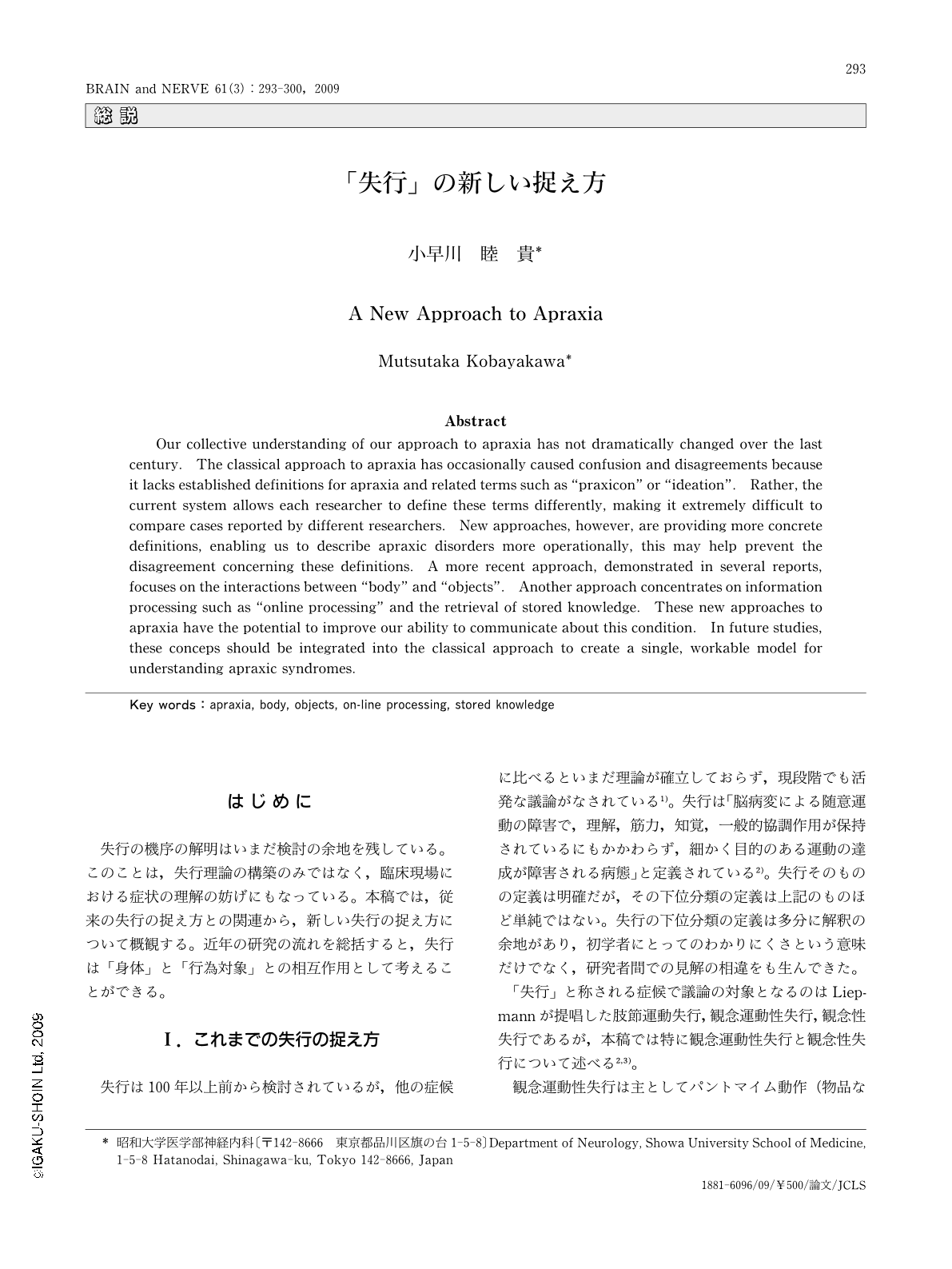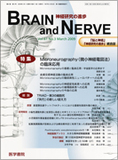Japanese
English
- 有料閲覧
- Abstract 文献概要
- 1ページ目 Look Inside
- 参考文献 Reference
- サイト内被引用 Cited by
はじめに
失行の機序の解明はいまだ検討の余地を残している。このことは,失行理論の構築のみではなく,臨床現場における症状の理解の妨げにもなっている。本稿では,従来の失行の捉え方との関連から,新しい失行の捉え方について概観する。近年の研究の流れを総括すると,失行は「身体」と「行為対象」との相互作用として考えることができる。
Abstract
Our collective understanding of our approach to apraxia has not dramatically changed over the last century. The classical approach to apraxia has occasionally caused confusion and disagreements because it lacks established definitions for apraxia and related terms such as "praxicon" or "ideation". Rather,the current system allows each researcher to define these terms differently,making it extremely difficult to compare cases reported by different researchers. New approaches,however,are providing more concrete definitions,enabling us to describe apraxic disorders more operationally,this may help prevent the disagreement concerning these definitions. A more recent approach,demonstrated in several reports,focuses on the interactions between "body" and "objects". Another approach concentrates on information processing such as "online processing" and the retrieval of stored knowledge. These new approaches to apraxia have the potential to improve our ability to communicate about this condition. In future studies,these conceps should be integrated into the classical approach to create a single,workable model for understanding apraxic syndromes.

Copyright © 2009, Igaku-Shoin Ltd. All rights reserved.


